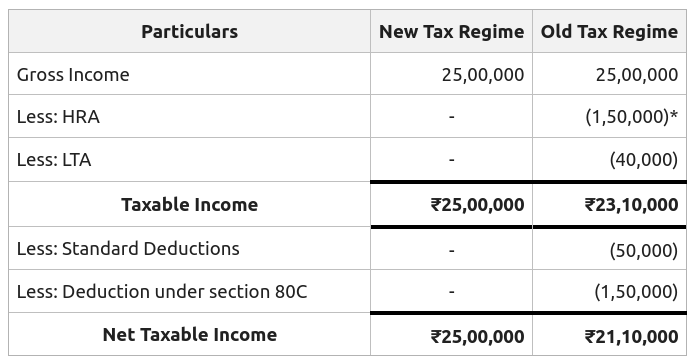How to calculate income tax on salary with example Calculating income tax on a salary involves understanding the applicable tax brackets and rates for your income level and region. For example, if an individual earns $50,000 annually and the tax rates are structured such that income up to $20,000 is taxed at 10%, income from $20,001 to $40,000 at 20%, and income above $40,000 at 30%, the calculation would be as follows: The first $20,000 is taxed at 10%, resulting in $2,000 of tax. The next $20,000 is taxed at 20%, adding $4,000. Finally, the remaining $10,000 is taxed at 30%, which is an additional $3,000. Therefore, the total tax payable would be $9,000. This process varies by country and can involve additional factors such as deductions, credits, and specific allowances, which can reduce the taxable amount.

Basic Concepts in Income Tax
- Taxable Income: This refers to the amount of income that is subject to tax, after deductions and exemptions have been applied.
- Tax Brackets: Tax rates progress based on income levels. These brackets are ranges of income to which specific tax rates apply, making the tax system progressive.
- Deductions: These are qualifying expenses that can be subtracted from gross income to reduce taxable income, such as mortgage interest, educational expenses, or contributions to retirement accounts.
- Exemptions: Certain portions of an individual’s or a family’s income are exempt from taxation, based on criteria like dependency and filing status.
- Credits: Tax credits are amounts that can be subtracted directly from the tax owed. They are often designed to encourage specific behaviors like investing in renewable energy or for educational purposes.
- Filing Status: This determines which tax bracket an individual falls into. Common statuses include single, married filing jointly, married filing separately, and head of household.
- Withholding: This is the amount of an employee’s pay withheld by the employer and sent directly to the government as partial payment of income tax.
- Estimated Taxes: Self-employed individuals and those who do not have taxes withheld must often make estimated tax payments throughout the year.
- Tax Returns: Annual statements filed with federal and state tax authorities that calculate taxable income, deductions, and credits to determine the total tax liability.
- Audit: An official review of an individual’s or organization’s accounts, typically by a tax agency, to ensure information is reported correctly according to the tax laws.
Step-by-Step Guide to Calculate Your Income Tax
Step 1: Determine Your Gross Income
- Sum up all your income sources for the year, including salaries, bonuses, rental income, investment returns, etc.
Step 2: Calculate Adjusted Gross Income (AGI)
- Subtract any allowable deductions from your gross income. These can include contributions to retirement accounts, student loan interest, or specific business expenses for self-employed individuals.
Step 3: Apply Standard or Itemized Deductions
- Decide whether to take the standard deduction or itemize your deductions. The standard deduction amount varies depending on your filing status (single, married, etc.). If itemizing, sum your deductible expenses like mortgage interest, state and local taxes, charitable contributions, and medical expenses that exceed a certain percentage of your AGI.
Step 4: Calculate Taxable Income
- Subtract your chosen deduction method (standard or itemized) from your AGI to determine your taxable income.
Step 5: Apply Tax Rates to Determine Preliminary Tax Due
- Apply the current tax brackets to your taxable income. This is typically done progressively, with each segment of your income being taxed at a different rate. Calculate the tax for each segment and add them together.
Step 6: Consider Tax Credits
- Subtract any eligible tax credits from your preliminary tax due. Tax credits might include education credits, energy credits, or credits for dependent care.
Step 7: Account for Additional Taxes
- Include any additional taxes you may owe, such as self-employment tax, alternative minimum tax, or taxes on investment income.
Step 8: Subtract Withholdings and Prepayments
- Subtract taxes already paid throughout the year through withholdings from your paycheck or estimated tax payments.
Step 9: Calculate Final Tax Due or Refund
- If the total of your payments and credits exceeds your tax liability, you’ll receive a refund. If your payments and credits are less than your liability, you’ll owe money to the tax authority.
Example Calculation:
- Gross Income: $60,000
- Adjusted Gross Income (AGI): $60,000 (no adjustments for simplicity)
- Standard Deduction (Single Filer for 2023): $13,850
- Taxable Income: $60,000 – $13,850 = $46,150
- Tax Calculation:
- First $10,275 at 10% = $1,027.50
- Next $31,500 ($41,775 – $10,275) at 12% = $3,780
- Remaining $4,375 ($46,150 – $41,775) at 22% = $962.50
- Total Preliminary Tax Due: $1,027.50 + $3,780 + $962.50 = $5,770
- Tax Credits and Additional Taxes: Assume $0 for simplicity
- Total Payments and Withholdings: Assume $6,000
- Final Calculation: $6,000 – $5,770 = $230 refund due
How to Use Online Tax Calculators
Step 1: Select a Reputable Tax Calculator
- Choose a reliable online tax calculator from a trusted source. Popular options include those provided by tax preparation companies like TurboTax, H&R Block, or government websites like the IRS in the United States.
Step 2: Gather Your Financial Information
- Before you start, collect all necessary financial documents, such as your most recent pay stubs, details of other income sources, and records of any deductions or credits you plan to claim.
Step 3: Enter Your Filing Status
- Input your filing status into the calculator, as it significantly affects your tax calculation. Options typically include single, married filing jointly, married filing separately, or head of household.
Step 4: Input Your Income
- Enter your total income, which should include wages, salaries, bonuses, dividends, interest income, and any other sources of income.
Step 5: Add Deductions and Adjustments
- Input adjustments to your income, such as contributions to retirement accounts or alimony payments, which can lower your taxable income. Also, decide whether you’ll take the standard deduction or itemize deductions based on expenses like mortgage interest, property taxes, and charitable donations.
Step 6: Include Eligible Tax Credits
- Enter any tax credits you are eligible for, such as education credits, energy efficiency credits, or credits for dependent care expenses. These will reduce your tax liability directly.
Step 7: Calculate and Review Results
- After entering all the necessary information, submit the data to calculate your estimated tax liability. The calculator will display how much you owe or your expected refund based on the current tax laws applicable to your inputs.
Step 8: Adjust as Needed
- If the results seem off or you want to explore different scenarios, adjust the inputs accordingly. For example, you might want to see how increasing retirement savings contributions could affect your taxes.
Step 9: Plan for Tax Payment or Refund
- Use the results to plan for any tax payments you may need to make or consider how you might use any refund effectively. If you owe a substantial amount, explore options to make payments or adjust withholdings for future tax periods.
Step 10: Consult a Professional if Necessary
- If your tax situation is complex, involving multiple income streams, deductions, or credits, or if you need specific advice to minimize your tax liability, consider consulting with a tax professional.
Conclusion
FAQs
Q: 1 What is Income Tax on Salary?
Ans:: Income tax on salary is a tax levied by the government on the income earned by individuals from their jobs or professions. It is calculated based on predefined tax rates applied to your taxable income after deductions and exemptions.
Q: 2 How is Taxable Income Determined?
Ans: Taxable income is calculated by subtracting allowable deductions (such as contributions to retirement accounts or medical expenses) from your gross income (total earnings before taxes).
Q:3What are Tax Brackets and Rates?
Ans: Tax brackets are ranges of income to which specific tax rates apply. Rates typically increase as income rises, reflecting a progressive tax system. For example, income up to a certain amount may be taxed at a lower rate, with higher rates applying to additional income.
Q: 4How Do Deductions and Credits Affect Income Tax?
Ans: Deductions, such as mortgage interest or charitable contributions, reduce your taxable income. Tax credits directly reduce the amount of tax you owe, providing additional savings.






